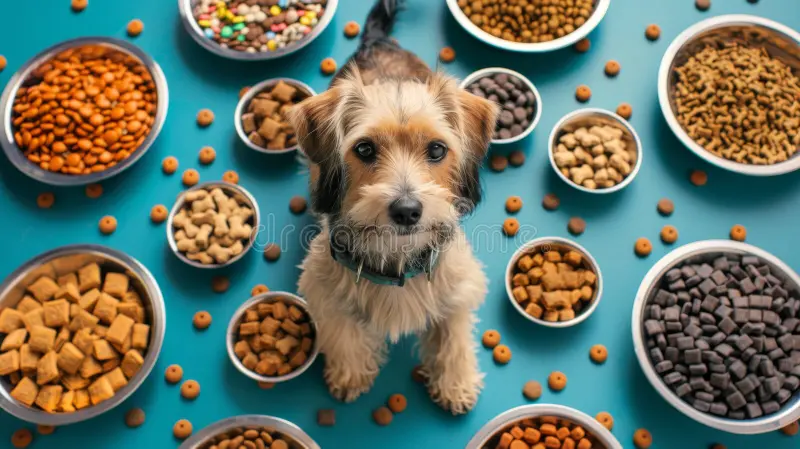Information on Various Types of Pet Food: From Kibble to Raw for All Types of Pets
Choosing the right food for your pet is crucial for their health and well-being. With so many Types of pet food options available, from commercial to holistic approaches, it’s essential to understand the pros and cons of each type. Whether you’re buying food in bulk from your favorite pet supplies store or considering more natural options, it’s important to make informed decisions. This article will explore the different varieties of pet food, from kibble to raw diets, helping you make the best choices for your pets. Additionally, having the right tools at home, such as those available in our shop kitchen gadgets section, can make food preparation and storage even more convenient.
1. Introduction to the Types of pet food
Pet nutrition has grown, with many types of pet food to cater to different needs. As more pet owners are looking for specialized pet food, including organic and homemade options, the options are endless. Knowing the right food for your pet is key to their long-term health, whether you’re looking for commercial or customized pet diets.
2. Kibble: Dry and Easy
Kibble is the most common type of dry pet food and is often chosen for its ease. It’s easy to store, has a long shelf life and is relatively cheap. But kibble is highly processed and often contains preservatives and additives which some pet owners prefer to avoid.
- Pros: Cheap, easy, long shelf life.
- Cons: Processed ingredients, low in moisture, may contain artificial additives.
Kibble is popular for dogs and cats but you need to choose a brand that offers balanced nutrition and made from good ingredients.
3. Canned or Wet Food: Moisture Rich Diets
Canned food, also known as wet pet food, is highly liked by pets because of its high moisture content and palatability. Many pets find it more appetizing because of the rich flavours and softer texture, which is especially good for older pets or those with dental issues.
- Pros: High in moisture, more appealing to fussy eaters, better for hydration.
- Cons: More expensive than kibble, shorter shelf life once opened.
Wet food is also good for pets that need to increase their water intake, especially for cats that are prone to urinary problems due to dehydration.
4. Raw Food Diets: Natural but Controversial
More and more pet owners are going for raw pet food, also known as the BARF diet (Biologically Appropriate Raw Food). This diet is what pets would eat in the wild, mainly raw meats, bones and sometimes vegetables.
- Pros: Higher in protein, natural ingredients, good for teeth and gums.
- Cons: Risk of bacterial contamination, requires careful handling and prep.
While proponents say a raw diet means shinier coats, healthier skin and overall better health, you need to be aware of the risks of bacteria like Salmonella and E. coli.
5. Homemade Pet Food: The Facts
Some pet owners make their own pet food. This gives them control over the ingredients which can be good for pets with specific dietary needs or food allergies. But preparing balanced homemade meals can be hard and time consuming.
- Pros: Control over ingredients, customizable to your pet.
- Cons: Risk of nutritional imbalances, time consuming, needs supplementation.
If you’re making homemade food, you need to consult with a vet or a pet nutritionist to make sure your pet gets all the nutrients.
6. Grain Free Diets: Fad or Necessity?
Grain free diets are in trend, many pet owners think it’s good for pets with food sensitivities or allergies. But not all pets need to avoid grains and recent studies show that some grain free foods may be linked to heart disease in dogs.
- Pros: Good for pets with grain allergies or digestive issues.
- Cons: More expensive, possible nutritional deficiencies.
Before switching your pet to grain free diet, consult with your vet to see if it’s really necessary for your pet’s health.
7. Prescription and Therapeutic Pet Food
For pets with specific health issues, prescription diets are required. These specialized foods are formulated for conditions like kidney disease, weight management or food allergies.
- Pros: Tailored to specific medical needs, often prescribed by vets.
- Cons: More expensive than regular pet food, requires a prescription.
Common prescription pet food is low fat for pets with pancreatitis and hypoallergenic for pets with severe allergies.
8. Freeze Dried, Dehydrated, Air Dried Pet Food
Freeze dried and dehydrated pet food offers the benefits of raw food without the storage and preparation hassle. These foods are minimally processed, retaining nutrients while being convenient for pet owners.
- Pros: Lightweight, retains nutrients, longer shelf life than raw food.
- Cons: Expensive, needs rehydration before serving.
These are good for pet owners who want the nutritional benefits of raw food with the convenience of kibble.
9. Pet Food Regulations and Standards
In many countries, pet food is regulated to ensure safety and nutritional adequacy. In the US, the FDA and AAFCO (Association of American Feed Control Officials) sets the standards for pet food labeling and ingredient safety.
FDA: Ingredients are safe, no contaminants.
AAFCO: Minimum nutritional requirements for different life stages.
When choosing pet food, it’s essential to check for AAFCO certification to ensure your pet’s food meets the necessary nutritional standards.
10. How to Switch Pets to a New Food
When switching your pet to a new food, do it gradually to avoid digestive upset. A slow transition allows your pet’s tummies to adjust to the new diet.
- Mix a little of the new food with the old food.
- Gradually increase the amount of new food over 7-10 days.
- Watch for signs of digestive discomfort or food intolerance.
This will help prevent stress for your pet.
Conclusion
Knowing the different types of pet food from kibble to raw diets is key to giving your pet the nutrition they need. Whether you choose dry food, wet food or more specialized diets like grain free or raw food, always consult with your vet to make sure you’re making the best choice for your pet.
By considering your pet’s individual needs and keeping an eye on the regulations you can make informed decisions to give your companion a healthy and happy life.


